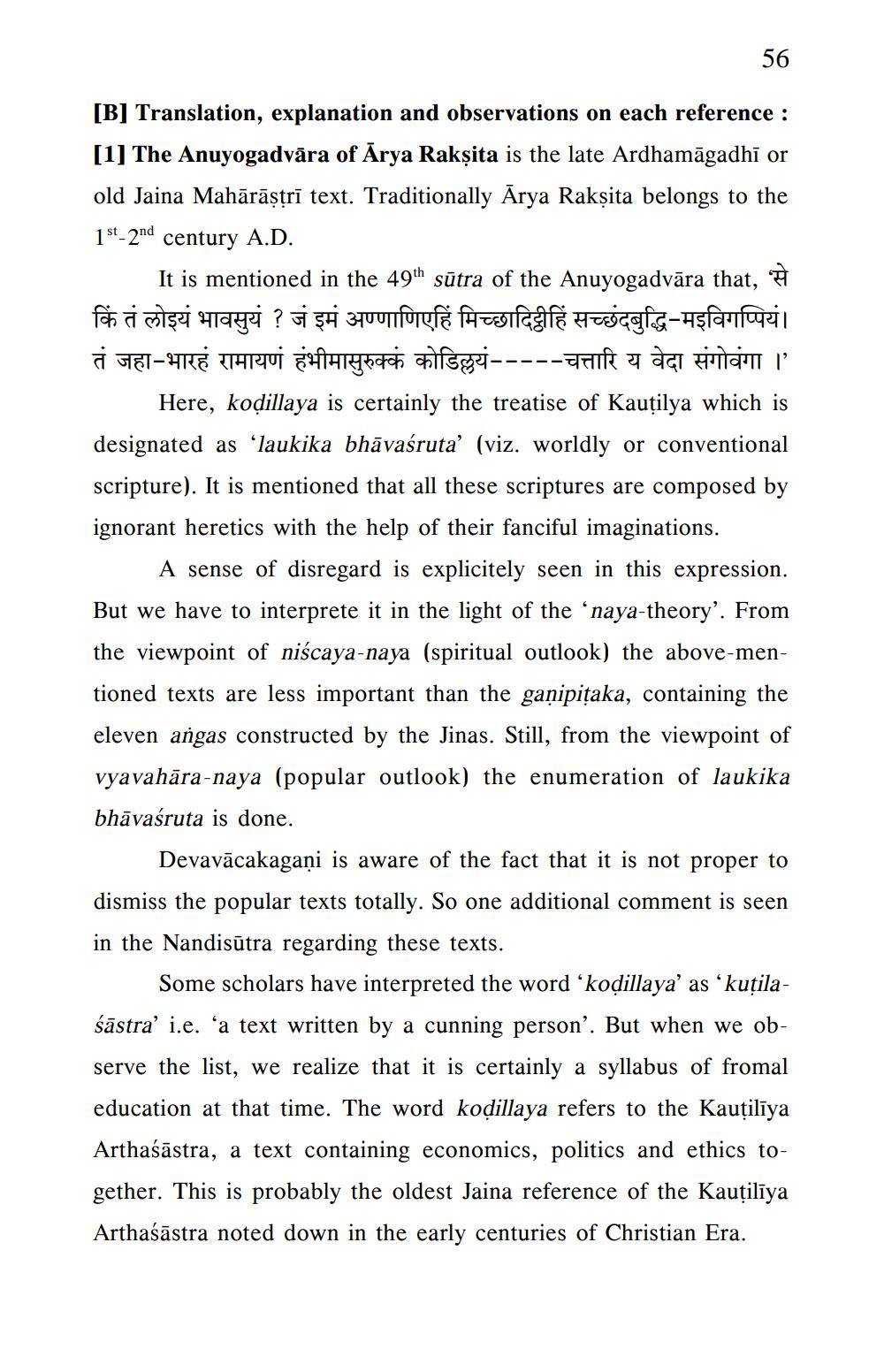________________
56
[B] Translation, explanation and observations on each reference : [1] The Anuyogadvāra of Ārya Rakṣita is the late Ardhamāgadhī or old Jaina Mahārāștrī text. Traditionally Ārya Rakṣita belongs to the 1st-2nd century A.D.
It is mentioned in the 49th sūtra of the Anuyogadvāra that, # किं तं लोइयं भावसुयं ? जं इमं अण्णाणिएहिं मिच्छादिट्ठीहिं सच्छंदबुद्धि-मइविगप्पियं। JET-ARÉ TAPI for too olfsgi-----a a agi d i
Here, kodillaya is certainly the treatise of Kauțilya which is designated as 'laukika bhāvaśruta' (viz. worldly or conventional scripture). It is mentioned that all these scriptures are composed by ignorant heretics with the help of their fanciful imaginations.
A sense of disregard is explicitely seen in this expression. But we have to interprete it in the light of the ‘naya-theory'. From the viewpoint of niscaya-naya (spiritual outlook) the above-mentioned texts are less important than the ganipițaka, containing the eleven angas constructed by the Jinas. Still, from the viewpoint of vyavahāra-naya (popular outlook) the enumeration of laukika bhāvaśruta is done.
Devavācakagani is aware of the fact that it is not proper to dismiss the popular texts totally. So one additional comment is seen in the Nandisūtra regarding these texts.
Some scholars have interpreted the word 'kodillaya' as 'kuțilaśāstra' i.e. 'a text written by a cunning person'. But when we observe the list, we realize that it is certainly a syllabus of fromal education at that time. The word kodillaya refers to the Kautilīya Arthaśāstra, a text containing economics, politics and ethics together. This is probably the oldest Jaina reference of the Kauțilīya Arthaśāstra noted down in the early centuries of Christian Era.




